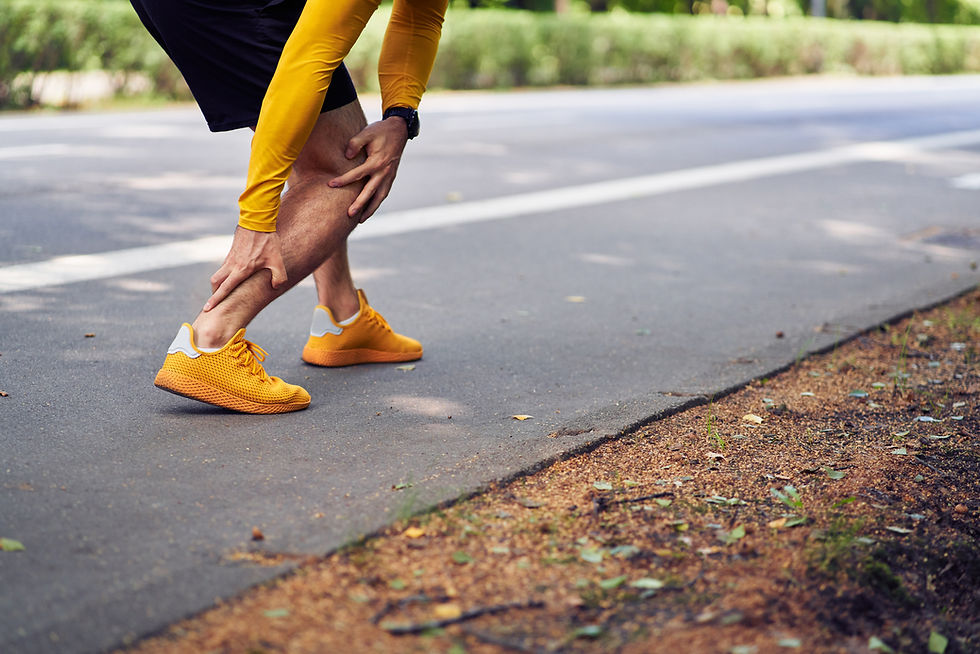Many Ankle Sprains Are Preventable
- Kevin Ryan, MPT
- Oct 11, 2017
- 4 min read

The ankle and foot, structurally, are very complex. There are 7 bones in the rear and mid-foot, each toe has 3 to 4 bones in it, and there is a myriad of ligaments, muscles, and tendons in and around the foot and ankle. In fact, there are 4 layers of muscles, fascia, and tendons on the bottom of your foot alone. The function of the ankle and foot is even more complex. It has to react to the forces of the foot hitting the ground, usually eccentrically, and then translate those forces up the leg. Those forces are transferred back down the leg and it responds typically with a concentric force to alter the body’s direction in all movement.
Ankle sprains are the most common lower extremity injury in sports and many of us just brush it off as “just” another ankle sprain.
Did you know that many ankle sprains are preventable?
There is a plethora of research that continuously shows that including balance and proprioceptive training into your routine reduces in season ankle injuries of athletes at all levels. In particular, it is very effective in preventing a re-injury of a previously sprained ankle.
What is Balance and Proprioception?
Balance by definition is simple. It is your body’s ability to control its moving parts in space. It is the ability to stand on one leg, take a step, and place one foot in front of the other. Static balance is the ability to hold positions without moving. Standing on one leg is static balance. If you are practicing balance simply standing on 1 foot, you are not going to prevent dynamic ankle sprains. Dynamic balance is the ability to control your body in space while moving. This type of balance is in everything we do, walking, stepping, climbing up and down stairs, etc. Standing on one leg in sports happens continuously. Running is technically a series of single hops. Cutting is a single leg weight transfer from one direction to another. Jumping is clearly either done jumping off one foot or landing on one foot or both. Two legged jumping is dynamically controlling, transferring forces, and landing in a squat. Dynamic balance in sport is a continuous fluidity of movement that transfers these dynamic forces from one foot to the other or both feet together.
Proprioception by definition is your body’s ability to sense or “perceive” the movements and position of the body and especially its limbs. This sense is independent of vision and gained primarily from input from sensory nerve terminals in muscles, tendons and the fibrous capsule of joints combined with input from the vestibular system. In short, it is your body’s unconscious ability to know what your legs and arms are doing in space. This system is extremely important in sports and activities. It is how we are able to look where we are walking without actually having to look where we place each foot. It is how we scan the field of play without stopping our forward movement, losing our dribble, or fumbling the ball. Training and practice can actually improve our body’s proprioceptive capabilities.
What does Balance and Proprioception training look like?
Balance and proprioceptive training has endless possibilities. In a simple form, it involves standing on one leg and moving the other leg, hand, arm, or your head in all different directions. This improves the strength, balance and proprioception of the leg you are standing on. If you think of all the directions that our hands, legs, and head move while playing sports you could and should train your body to tolerate as many of these as possible. You should practice these standing on one leg, in a step stance position, in an open stance position, and in a closed stance position. In a more complex form, this involves the use of different surfaces via balance pads; different foot positions using balance boards/rocker board; and different stimulus using medicine balls, bands, and sticks.
We often do a lot of training to control our bodies in space, when in reality every movement in sports is a reaction. If we are not training these reactions, we will not get the desired injury prevention and performance enhancing effects.
I challenge all of you reading this to try a few things for me. Can you stand on 1 foot for greater than 30 seconds without swaying? Can you do this while moving the other leg in a running motion? Jumping motion? or swinging/kicking motion? Can you do this while moving one or both of your arms in a throwing motion? catching motion? or reaching motion? If you can’t, then you need to incorporate some of these exercises in your regular workout routine. It will certainly improve your overall risk for injuries particularly the all mighty ankle sprain! If you are not exercising regularly outside of your desired sport or activity then you should incorporate these into your warm-up.
If you can improve your balance and proprioception with both feet on the ground, one foot on the ground, and while moving from one position or direction to another; you will reduce your chance for ankle sprains. Everyone should be incorporating these types of exercises into any good program. For more information and tips come see us at Five Star Sports Rehab and Physical Therapy or Teamworks Sports Performance Center inside Teamworks in Acton.



Comments